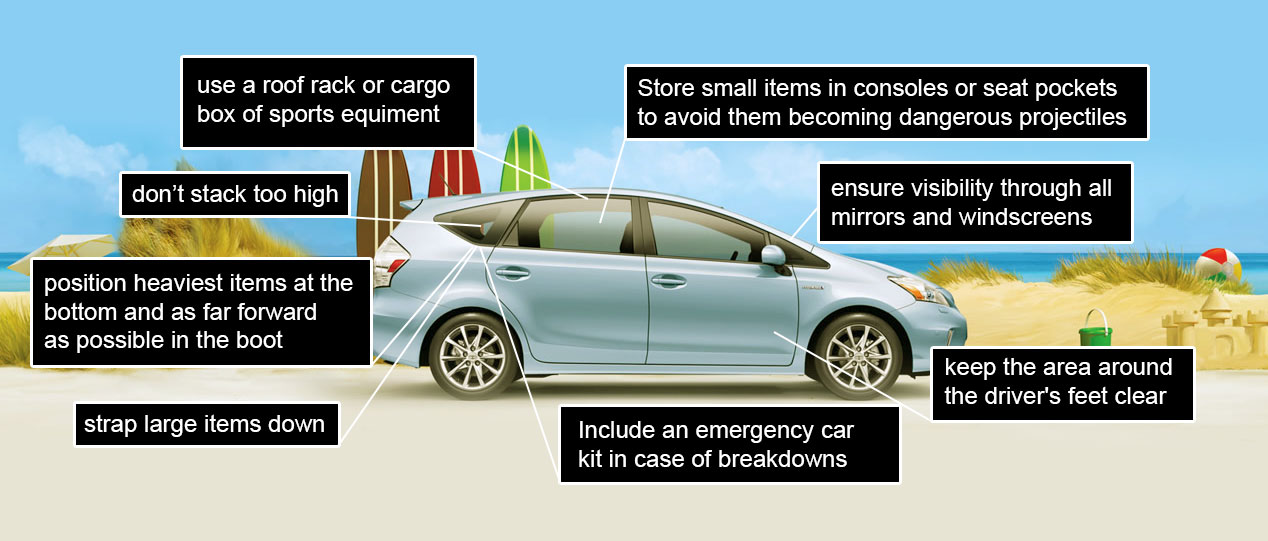About to head off on a road trip? Read our tips on how to pack the car safely for a road trip to help you load up more effectively and increase safety for you and your passengers.
Before loading up, check your vehicle’s VIN plate or handbook for the weight limit and adjust tyre pressure as recommended for heavy loads.
Up Top
- Generally, large or awkwardly shaped items, such as sporting equipment are best stored on roof racks, as long as they’re not too heavy. Heavy items are best stored inside.
- Be aware that the drag of the car, height and weight will all be increased by adding roof storage. Measure the height before you head off so you’re ready for overpasses and tunnels. A sticky note on the dashboard is a good reminder.
- Make sure any load carried on the roof of the vehicle is safely secured.
- Check ropes / straps / hooks etc every time you make a rest stop to ensure they are well fastened.
In the Boot
- Large, heavy items should be packed at the bottom of the boot and as far forward as possible to keep the centre of gravity low and optimize weight distribution.
- Pack tight, strap large items and put small items in suitcases/boxes – objects in your vehicle can become dangerous projectiles in a crash. Consider investing in a net or safety partition to prevent items from flying forward.
- Avoid packing above the line of the back seats – not only can you obscure your rear view but it also puts passengers at risk of a serious injury in a collision.
- Ensure you have clear vision through your front and rear windscreens and mirrors. Poor visibility contributes to many pedestrian deaths and road trauma.
- Make sure you pack an emergency breakdown kit – including reflective warning triangles to make you visible.
In the Cabin
- Avoid using the inside of the passenger area for storing your luggage. Under emergency braking at 50 km/h, loose items can have a force of up to 50 times their weight.
- If you must store luggage in the cabin, use spaces beneath passenger seats.
- Store small items such as books, phones and electronics in seat pockets or consoles to reduce projectiles in a crash.
- Keep the area around the driver’s feet clear. Loose items are distracting – and dangerous if they slide beneath the driver’s feet and keep the pedals from working properly.
- Keep essential items (such as tissues, drinking water, healthy energy-boosting foods, etc) within reach – turning or reaching for items while driving is incredibly dangerous.
- Remember to pack a first aid kit
- Pack rubbish bags to keep the environment clean.
- Have a flashlight handy in the glovebox.

